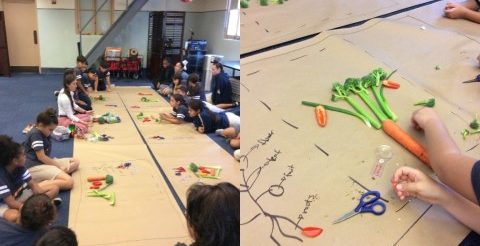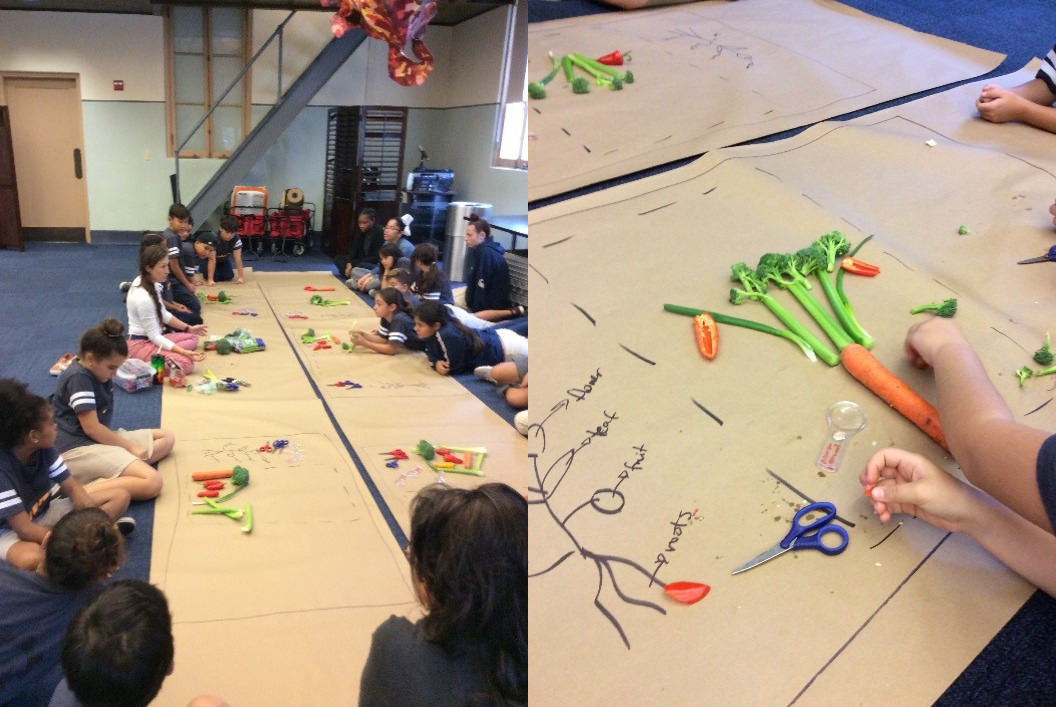2019 Award Winner for Innovation in Museum Education: Vizcaya’s Urban Farming School Program – American Alliance of Museums


The EdCom Award for Innovation in Museum Education recognizes, encourages, and celebrates new, creative ways of engaging with audiences. Vizcaya Museum and Gardens‘ Urban Farming School Program was lauded by the judges for engaging students with issues directly impacting Miami-Dade county. Read below to learn more about this innovative approach to using your site to address the needs of your community!
—Veronica Alvarez, EdCom Leadership Awards Chair
There are two apparently unconnected questions that explain how our Urban Farming School Program at Vizcaya Museum and Gardens won the 2019 AAM EdCom Innovation in Museum Education Award:
These questions, more importantly than winning an award, allow us to engage students in an important discussion on their relationship with the food they eat, the environment and our production systems within it, and our ability to change our impact on the landscape of food security, one plant at a time.
Vizcaya Museum and Gardens is a historic house museum in Miami. In our impressive Main House, we engage students on topics like architecture, art, design, and engineering. Outside in our formal gardens and various native ecosystems, including Biscayne Bay, we lead studies of historical and contemporary art, landscape architecture and design, environmental stewardship, and all kinds of sensorial engagement. So why and how are we talking about urban farming in a historic home that faces the ocean?
The answer starts in the beginning of the house’s history. James Deering, the original owner of Vizcaya, was instrumental in the history of agriculture and technology in the United States in the 1910s and 20s. He owned Deering International and eventually managed International Harvester, both companies that produced mechanized farming equipment. Knowing how important food production and access to food was, Deering included in his plans for Vizcaya something called the Village. On the opposite side of the property’s Main House and gardens, the Village housed extensive land for farming, various workshops, barns for cows and mules, chicken coops, and staff residences. We use resources like the two pictures below to show students what Miami and Vizcaya looked like in the Deering era.
This rich agricultural legacy is a fantastic springboard to discuss urban farming with students. In the first part of the program, we use the topic to reinforce classroom learning like measurements, calculations, design, and systems thinking; to review concepts of geography, botany, biology, and science; and to encourage critical and creative thinking, comparing and contrasting skills, deep observation, and peer-to-peer learning. But above all, we use the topic of urban farming to discuss and reflect on food security and access, food deserts, food production, and environmental impact. The USDA defines food deserts as “parts of the country vapid of fresh fruit, vegetables, and other healthful whole foods, usually found in impoverished areas. This is largely due to a lack of grocery stores, farmers’ markets, and healthy food providers.”
These discussions can be very difficult and close-to-home for many of the children that participate in the program, but it is precisely for that reason that they are essential and relevant.
Both food cost and food security are major issues in our local community. Of the approximately 2.5 million people who live in Miami-Dade, 20 percent are below the national poverty level, almost 390 thousand of them children ages five to eighteen. 83 percent of children in poverty in the county are enrolled in public schools, and in the 2017-18 school year 67 percent of these public schools were designated “Title I,” the part of the Every Student Succeeds Act (ESSA) that supports programs to improve the learning of children from low-income families.
In the 2015-16 school year, 72 percent of schoolchildren in Miami-Dade were eligible for free and reduced lunches, while 20 percent of children were considered food-insecure in 2016. Between 2012 and 2016, 44 percent of households in Miami-Dade with children under eighteen years old participated in the Supplemental Nutrition Assistance Program (SNAP).
There is a correlation between areas with low access to fresh and healthy food sources and families who live below the poverty line. Title I schools tend to be in the same areas. Nutrition, food, and healthy natural environments are therefore important topics that impact our local students, particularly the ones that need it the most. The Florida Department of Health has also identified nutrition as one of the major areas of impact in preventing chronic diseases in the county.
The Urban Farming Program at Vizcaya addresses these difficult but very important issues that affect our community. A school program aligned to curricular standards has proven to be the perfect vehicle to ignite these conversations that have the potential to change minds and behaviors.
After students have engaged in these critical discussions, they move onto the second half of the program, which enhances their reflections with a hands-on academic experience. Students review the parts of a plant and its various functions by dissecting common edible plants such as broccoli, carrots, onions, peppers, and kale. They learn plant care and planting skills by harvesting herbs to prepare a simple herb-infused water, and by sowing seeds to take home. Students get instructions on how to care for their plant and how to use it later on for food. They typically plant sunflower seeds, because they are edible as young seedlings or can be transplanted and nourished into a mature plant to produce more seeds later on.
This program started very small and is growing slowly, but it has been one of the most successful and impactful programs that I have had the pleasure to envision, plan, and facilitate in my career. I have a true passion for sparking reflection and producing “a-ha” moments in people, particularly children. I am also in love with nature, plants, food, and soil. I love to grow edible plants because they teach us all there is to learn about the world and how we relate to it. Following these passions also allowed me a few minutes in front of a group of colleagues at AAM’s Annual Meeting to receive the award and say thank you! But now that I reflect on it, the best part is what I am doing right now, sharing what I love and believe in with others in the museum world.
If this short blog post has any message or call to action that I want you what to walk away with, let it be these:
About the author:
After several years in the higher education field working with politics and immigration theory, Diana Peña decided on a career change. Taking on a new professional path focused on education and community engagement, Diana worked for several years creating and facilitating programs with living collections. Diana currently works at Vizcaya Museum and Gardens creating experiences and programs for school-aged children and families. Diana thinks that the experience of learning is constant and is more powerful and successful when done in a community setting.
